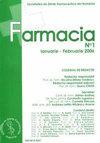利用网络药理学、分子对接和实验药理学方法评估依那普利的抗关节炎和免疫抑制潜力
IF 1.4
4区 医学
Q4 PHARMACOLOGY & PHARMACY
引用次数: 0
摘要
依那普利是一种血管紧张素转换酶抑制剂(ACEI),在主要炎症通路中具有潜在作用,本研究验证了依那普利的抗关节炎和免疫抑制特性。利用基于网络药理学的预测方法,揭示了依那普利可用于治疗关节炎的靶基因。依那普利的体外抗关节炎疗效是通过一种测定牛血清白蛋白(BSA)、鸡蛋白蛋白中蛋白质变性以及人红血球(HRBC)膜稳定性的试验来评估的,其剂量范围为 100 至 6400 微克/毫升。在甲醛诱导的关节炎模型中,以 2、4 和 8 毫克/千克体重的剂量评估了依那普利的体内抗关节炎功效。采用二硝基氯苯(DNCB)诱发的迟发型超敏反应(DTH)和环磷酰胺诱发的骨髓抑制来评估依那普利的免疫抑制能力。网络药理学结果显示,依那普利的抗关节炎作用靶点包括肿瘤坏死因子(TNF)、基质金属蛋白酶 9(MMP-9)和卡巴酶 3(CASP3)。依那普利与这三个靶点的分子对接也验证了它们之间的强相互作用。依那普利明显抑制了鸡蛋白蛋白和牛血清白蛋白(BSA)测定中的蛋白质变性,并稳定了暴露在低渗介质中的红细胞溶血。同样,依那普利对甲醛引起的爪水肿也有剂量依赖性抑制作用。在 DTH 试验中,与阴性对照组相比,依那普利能显著减少皮肤厚度,并在环磷酰胺诱导的骨髓抑制中表现出强大的免疫抑制潜力。根据目前的研究结果,可以预测依那普利具有抗关节炎的特性,这可能是由于它具有免疫抑制潜能。本文章由计算机程序翻译,如有差异,请以英文原文为准。
ASSESSMENT OF THE ANTI-ARTHRITIC AND IMMUNOSUPPRESSIVE POTENTIAL OF ENALAPRIL BY USING NETWORK PHARMACOLOGY, MOLECULAR DOCKING AND EXPERIMENTAL PHARMACOLOGY APPROACHES
The present study validates the anti-arthritic and immunosuppressive attributes of enalapril, an angiotensin-converting enzyme inhibitor (ACEI) with a potential role in major inflammatory pathways. A network pharmacology-based prediction approach was utilised to reveal the possible target genes that can be targeted by enalapril for managing arthritis. In vitro anti-arthritic efficacy of enalapril was assessed using an assay that measures the denaturation of proteins in bovine serum albumin (BSA), egg albumin and the stability of the human red blood cell (HRBC) membrane at a dosage ranging from 100 to 6400 µg/mL. In vivo anti-arthritic efficacy of enalapril at doses of 2, 4 and 8 mg/kg bw was assessed in formaldehyde-induced arthritis model. Dinitrochlorobenzene (DNCB)-provoked delayed type hypersensitivity (DTH) and cyclophosphamide-provoked myelosuppression were employed to assess the immunosuppressant capacity of enalapril. Network pharmacology outcomes revealed that the anti-arthritic effects of enalapril targets include tumour necrosis factor (TNF), matrix metalloproteinase 9 (MMP-9) and caspase 3 (CASP3). Molecular docking of enalapril with these three targets also validates the strong interaction between them. Enalapril markedly inhibited protein denaturation in egg albumin and bovine serum albumin (BSA) assays and stabilised RBC haemolysis exposed to hypotonic media. Likewise, enalapril demonstrated a dose-dependent inhibition of paw oedema provoked by formaldehyde. In the DTH assay, enalapril significantly reduced skin thickness compared to the negative control group and exhibited potent immunosuppressant potential in cyclophosphamide-induced myelosuppression. Based on the outcomes of the current study, it can be predicted that enalapril has anti-arthritic attributes that might be due to its immunosuppressive potential
求助全文
通过发布文献求助,成功后即可免费获取论文全文。
去求助
来源期刊

FARMACIA
医学-药学
CiteScore
2.40
自引率
50.00%
发文量
59
审稿时长
6-12 weeks
期刊介绍:
FARMACIA publishes original research papers, invited topical reviews and editorial commentaries and news, with emphasis on conceptual novelty and scientific quality. Main research areas are focused on: pharmacology, toxicology, medicinal chemistry, biopharmacy, drug design, drug delivery, personalized medicine, nanostructures, nutraceuticals, biochemistry and biotechnology. Manuscripts submitted to the Journal are only accepted after the peer review precess. The papers should have not been published in any other journal. The recommendations of the Declaration of Helsinki, for humans, and the International guidelines as accepted principles for the use of experimental animals should be followed.
 求助内容:
求助内容: 应助结果提醒方式:
应助结果提醒方式:


